
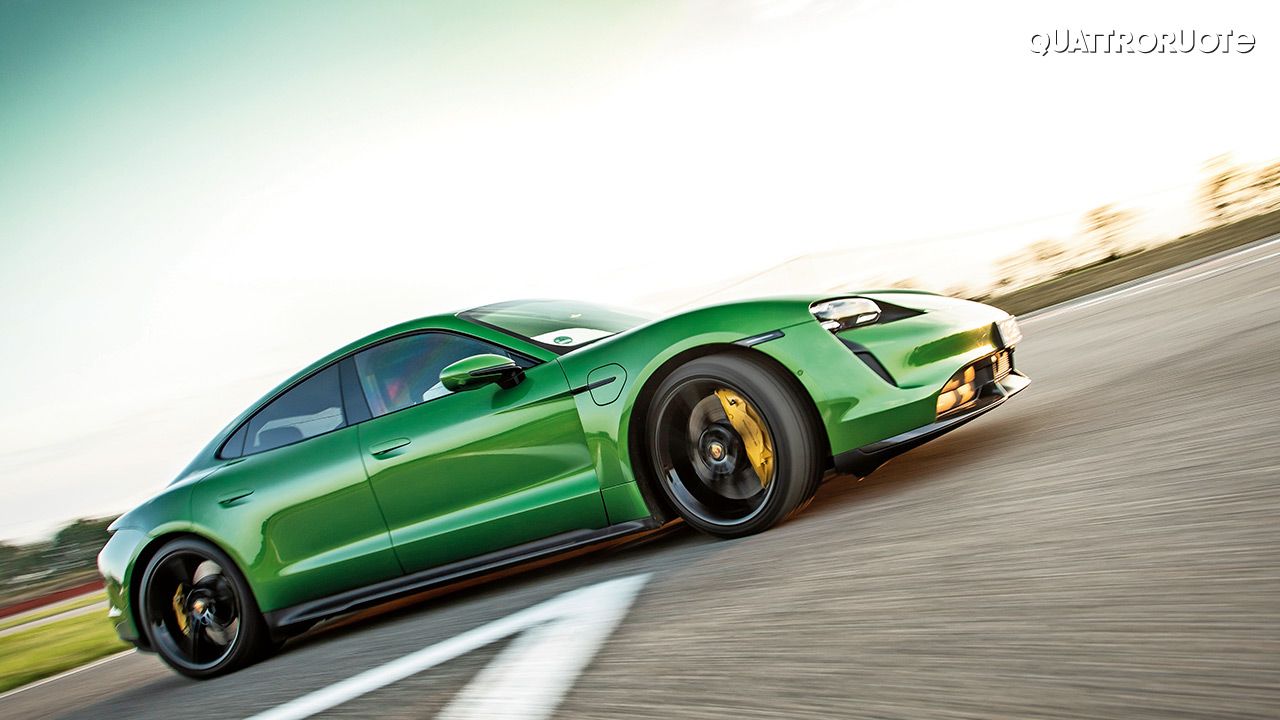
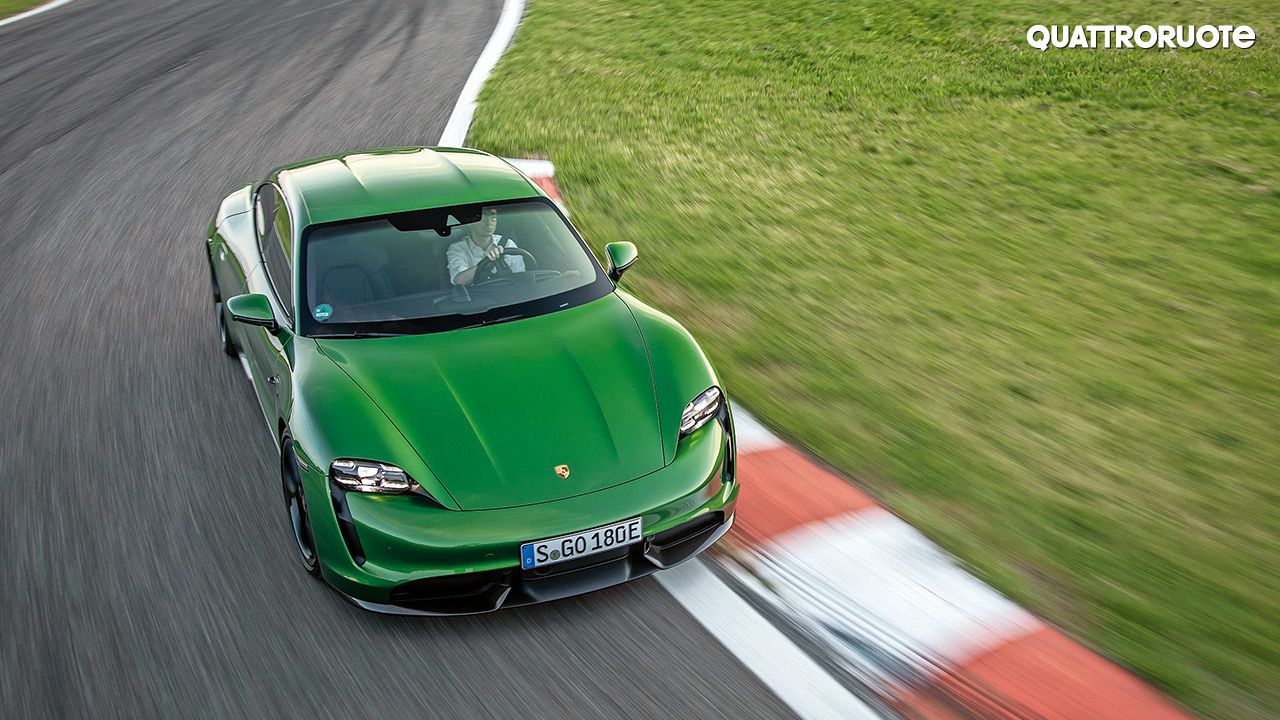

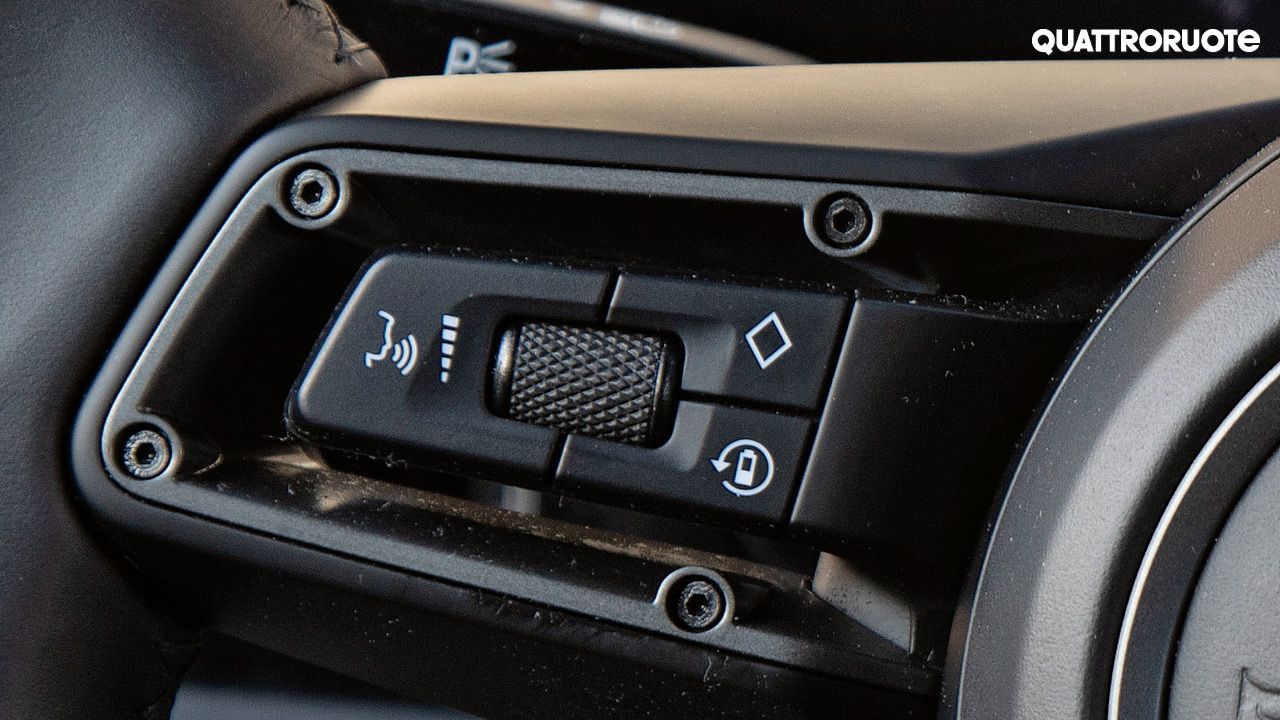
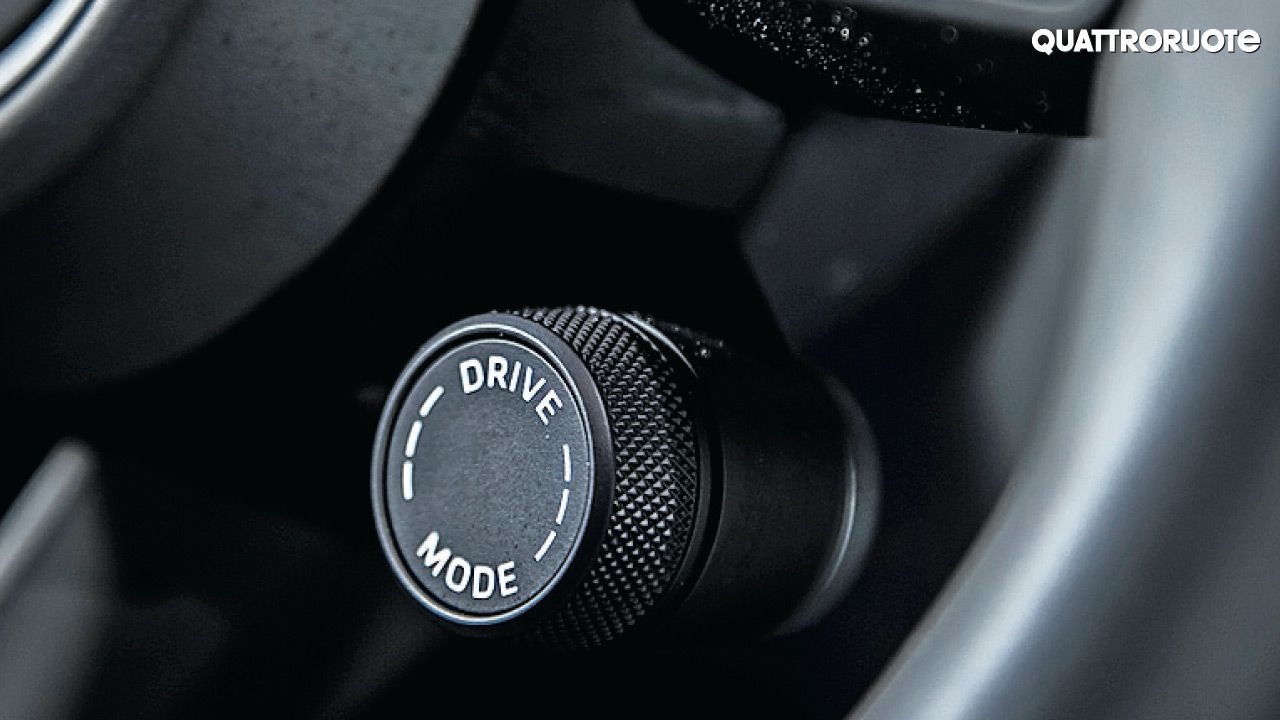
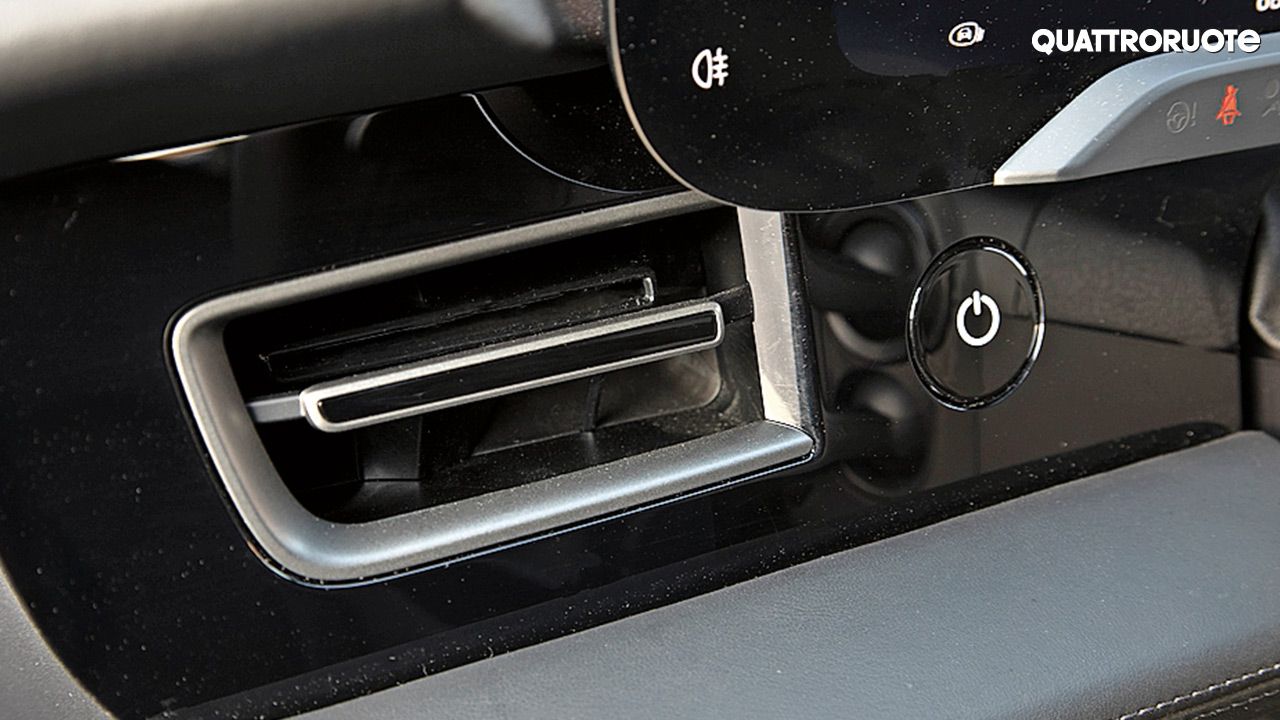
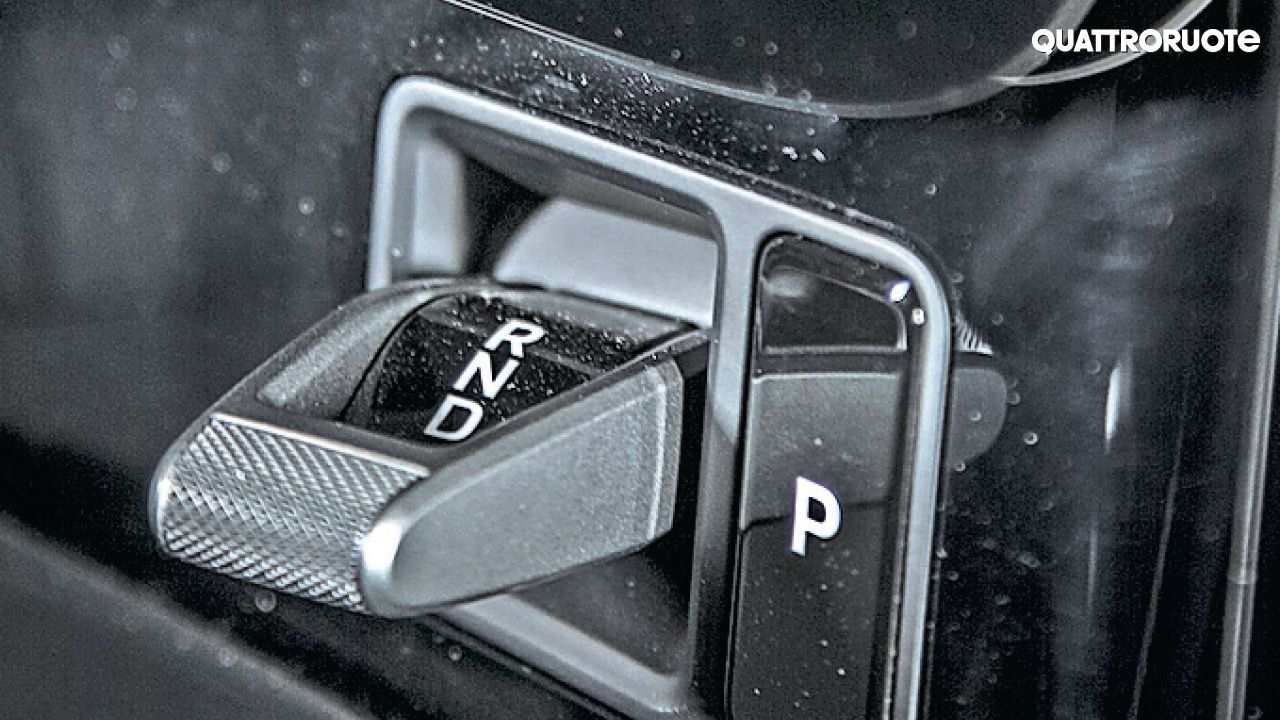
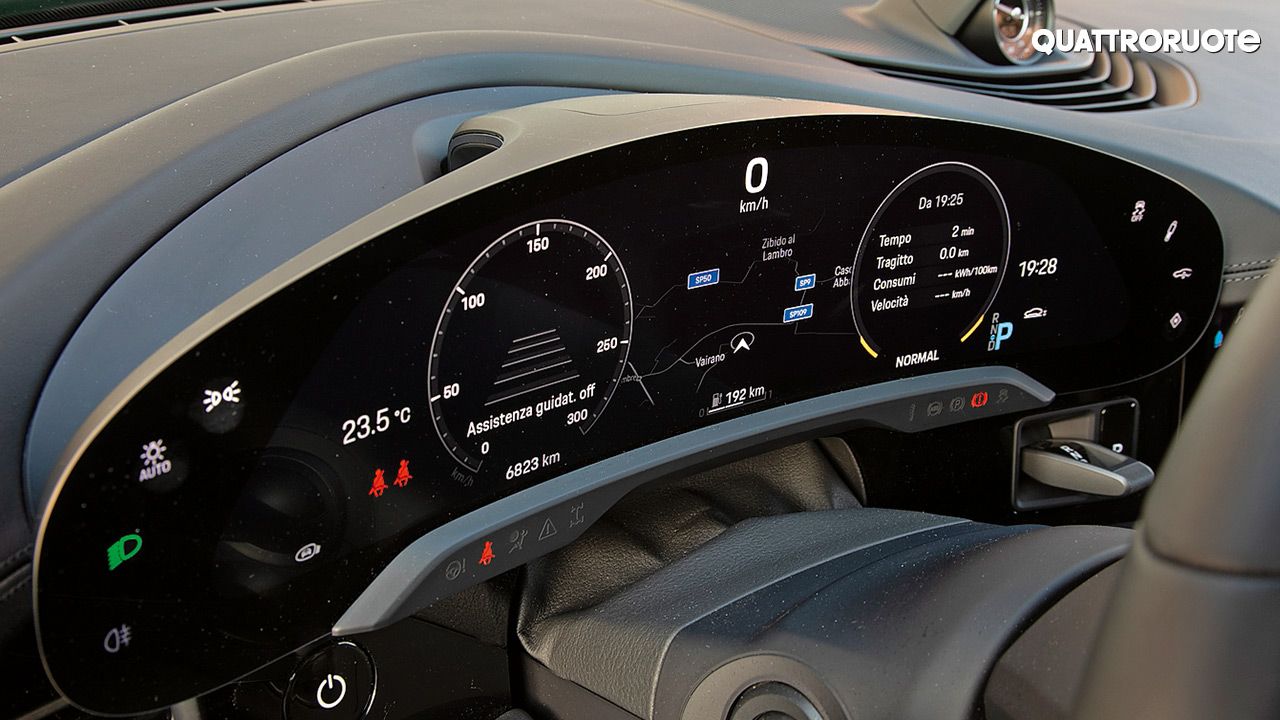

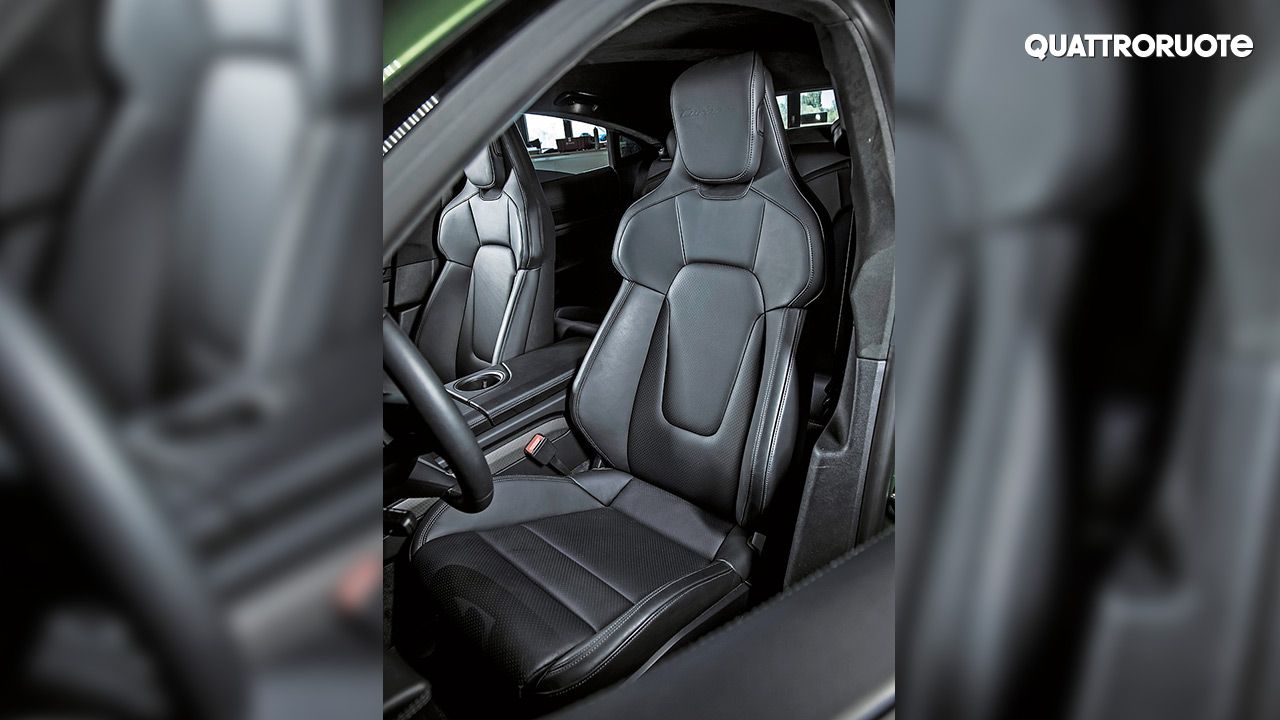
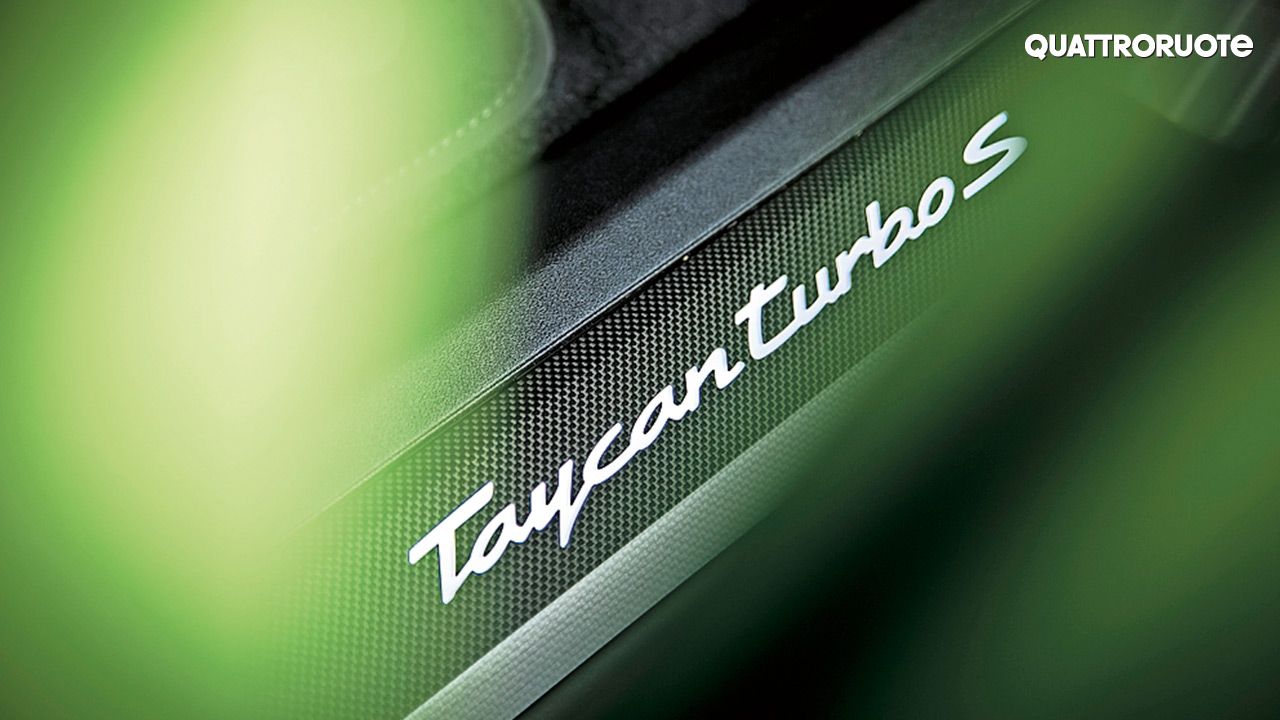

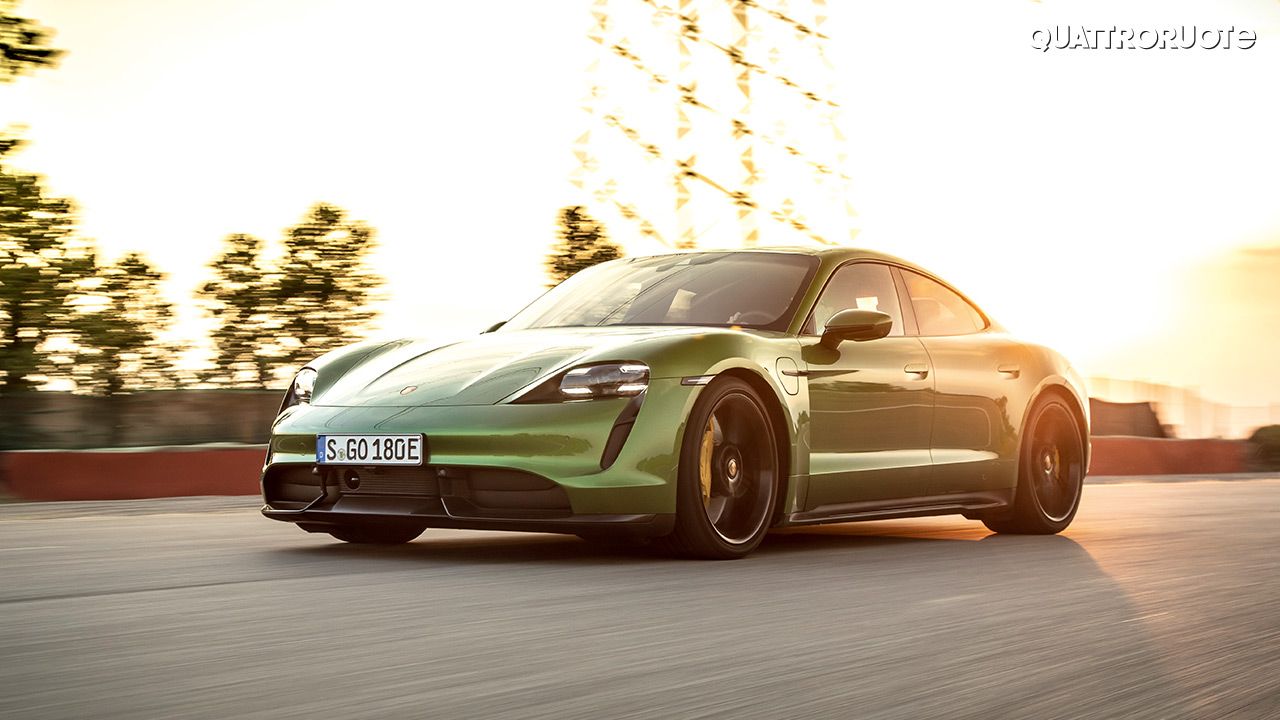
A true step towards the future comes only when you free yourself from the shackles of the past, in terms of ideas and even fuel or energy source. With an inordinate ability to transform volts into speed, Porsche’s seventy-year tradition makes
A true step towards the future comes only when you free yourself from the shackles of the past, in terms of ideas and even fuel or energy source. With an inordinate ability to transform volts into speed, Porsche’s seventy-year tradition makes things even more interesting.
The only green Porsche, thus far, in the garage of my dreams has been a 911 GT3 RS – a gorgeous 991.2 in Lizardgrün (Lizard Green). From today onwards, it’ll be parked next to this Taycan – a different green from a different time – in the garage of my dreams, of course. Now, I’m quite open to this new tradition – there’s no need to show uncritical love or ideological hatred here. Frankly, it’s simply a matter of transition – the future of the automobile is currently passing through an electrifying phase. Pun intended!

Therefore, it’s better to welcome and accept it and shape it around your own values. For instance, let’s look at the Taycan – saying that it’s an electric car doesn’t tell the whole story. To put it simply, it’s a Porsche which – by chance, you might add – doesn’t happen to use a traditional fuel. It flanks its gasoline siblings exactly like the first diesel-powered Porsches did in 2009.
To get here, Porsche has put forward the biggest investment in its history – 6 billion Euros! Obviously, all of that investment isn’t just for the Taycan, as it’ll be used to develop other electric cars. However, at least in part, this explains the high price tag of the Taycan – it’s one of the most expensive electric production cars on the planet. Not to mention that it quells any parallels with Tesla that people might be tempted to draw.
If you still compare Porsche with Tesla, then, do consider the fact that there are seven decades of tradition to differentiate the two. This is also why the Model S was not the inspiration for engineers and designers at Porsche. They had the task of raising the benchmark in the electric world even higher than what Tesla did, although, at times, both consciously and unconsciously they did end up proceeding with the Californian in mind. At other times, however, they had the 911 in the background – the constant and vaguely self-referential benchmark for those who worked on the J1 project, which later became the name of the Taycan’s chassis.

Panamera 911?
The most unforgettable Porsches also influenced the work of the designers, who, this time, kept their promise of creating a four-door coupé – an ambition that was never fully realized in the Panamera, with its slightly bulbous shape and four doors. A curved bonnet, raised fenders, wide sides, low and sloping roof – the Taycan has more visceral shapes, with futuristic details like its rear lights.
The avant-garde approach to design is evident in the cabin, which is accessed by a retractable door handle – much like the new 911. Even the cabin reminds you of the 911. As you settle into the driver’s seat, you realise that its position is as low as that in the 911. Also, the seat is equally capable of being comfortable during long journeys. More importantly, it’s ergonomically perfect. The dashboard design reminds you of the 928 and suggests a continuity of the 911. That said, the Taycan is more than just echoes of the past.

In fact, it is the first act of a new course built around the idea of electrification. The athletic style is firmly in place. On the left side of the dashboard is a start button that replaces the traditional Porsche ignition. However, to start the car all you have to do is press the brake pedal (yes, in perfect Tesla style!) – just like the gear selector, on the right side of the steering column.
The rest of the cabin is a celebration of screens. A 16.8-inch screen serves as an instrument cluster, and reminds you of a classic 911. It’s touch-sensitive at both edges though, which is a nice ‘touch’. Visually, the gauges extend outwards on both sides of the steering wheel, which, from certain angles, obstructs the temperature gauge and clock.
The other information is perfectly visible via three widely reconfigurable tools. Following the same logic as Audi and Land Rover, there is a 10.9-inch main screen and just below it, another vertical touch screen. But that’s not all, towards the right of the centre console, there is yet another 10.9-inch screen, which is dedicated to the front passenger (when you drive alone, it only bears the Taycan logo) and costs more than a thousand Euros – not a small amount by any measure!
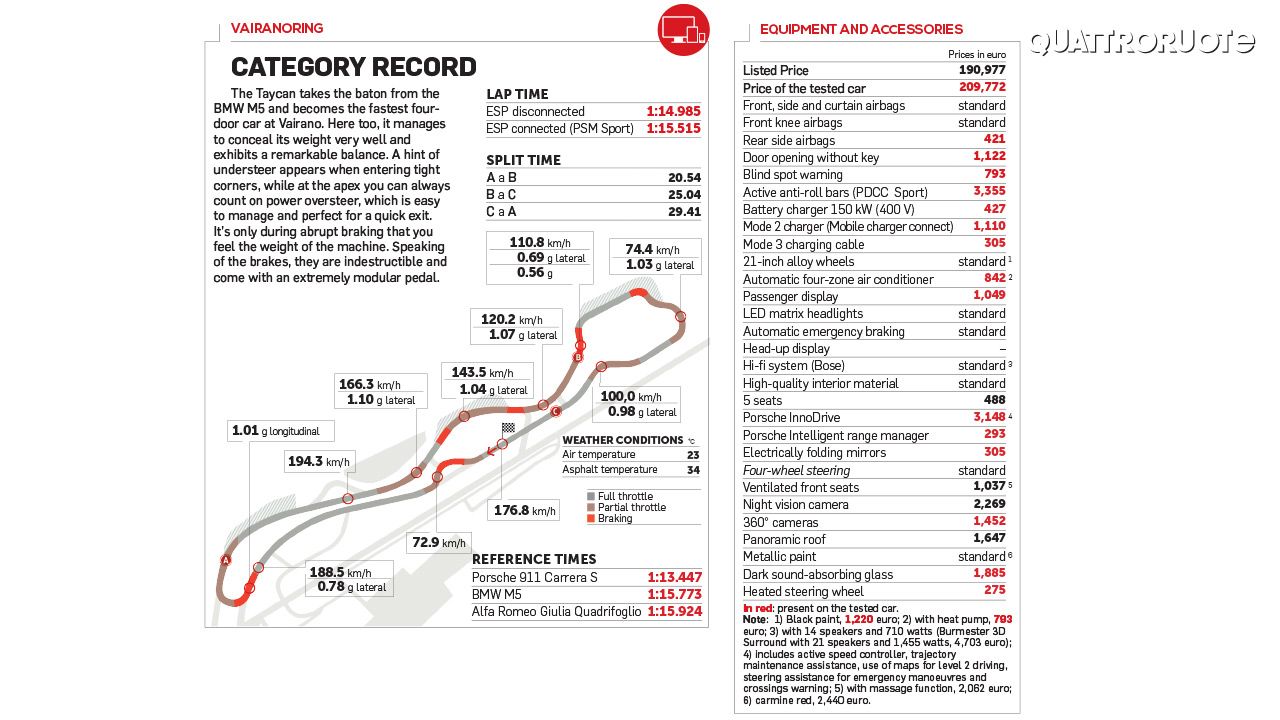
As charming and interesting as it looks, it remains to be understood why the front passenger would prefer the second 10.9-inch screen as compared with its central counterpart – after all, they are positioned right next to each other, are identical, and manage the same functions (music and navigation). And the only difference is that the one dedicated to the passenger has less functionality.
For the Guinness Book of Records, it is also worth mentioning that the four-zone air conditioner (an extra 842 Euros) can be accessed through another 5.9-inch display for the rear passengers. Unfortunately, such abundance is not matched by an equally extraordinary user experience – overall, it works well, and it’s fast, but it doesn’t set new benchmarks. What’s more, the wireless charging platform under the central armrest is anything but comfortable. Any other problems? Well, there’s Apple CarPlay but Android Auto is missing.
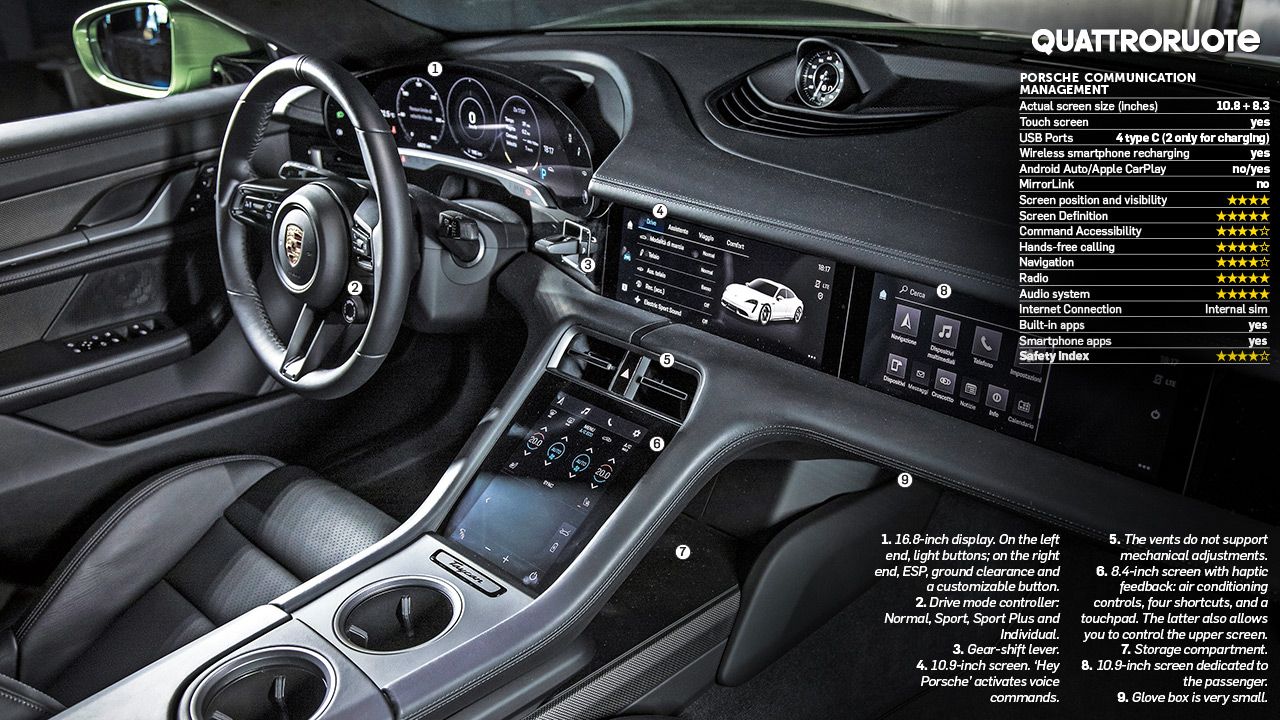
The overall finish, on the other hand, is impeccable, and the attention to detail is simply brilliant – nothing is less than well done. At times, here and there, you even get the impression of vague overengineering, but nothing too over the top. It’s evident not only in the choice of materials or the impeccable noise the doors make when you close them but also the little things, like the footwells for the rear seat passengers. It’s a nice way to maximize the potential of a passenger compartment that is neither cramped nor very spacious. Incidentally, here you have two big differences as compared to the Tesla, which is inferior to the Taycan in other areas but is more spacious. A few more inches in the rear compartment would certainly have been good for accessibility.
You don’t feel the weight
There is no Mezger here – the most extreme flat-six engine, named after Porsche’s iconic engine designer Hans Mezger, who unfortunately passed away a few weeks ago. Sure, there isn’t a thumping flat-six here, but there’s a spatial sound of the Porsche electrics at work to keep you from falling for clumsy nostalgic sentimentality. This is a step towards making the future sound more exciting. If nothing else, the sound helps engage the driver while driving fast. But, for everyday use, it’s no surprise that the Taycan offers a great combination of silence and comfort. The Taycan is as smooth and responsive as they come, while the chassis is incredibly responsive. And, with a claimed range of almost 400 kilometres (although, we didn’t quite achieve the stated range – the details of which you can see in this exhaustive test), it can even be used on long journeys.
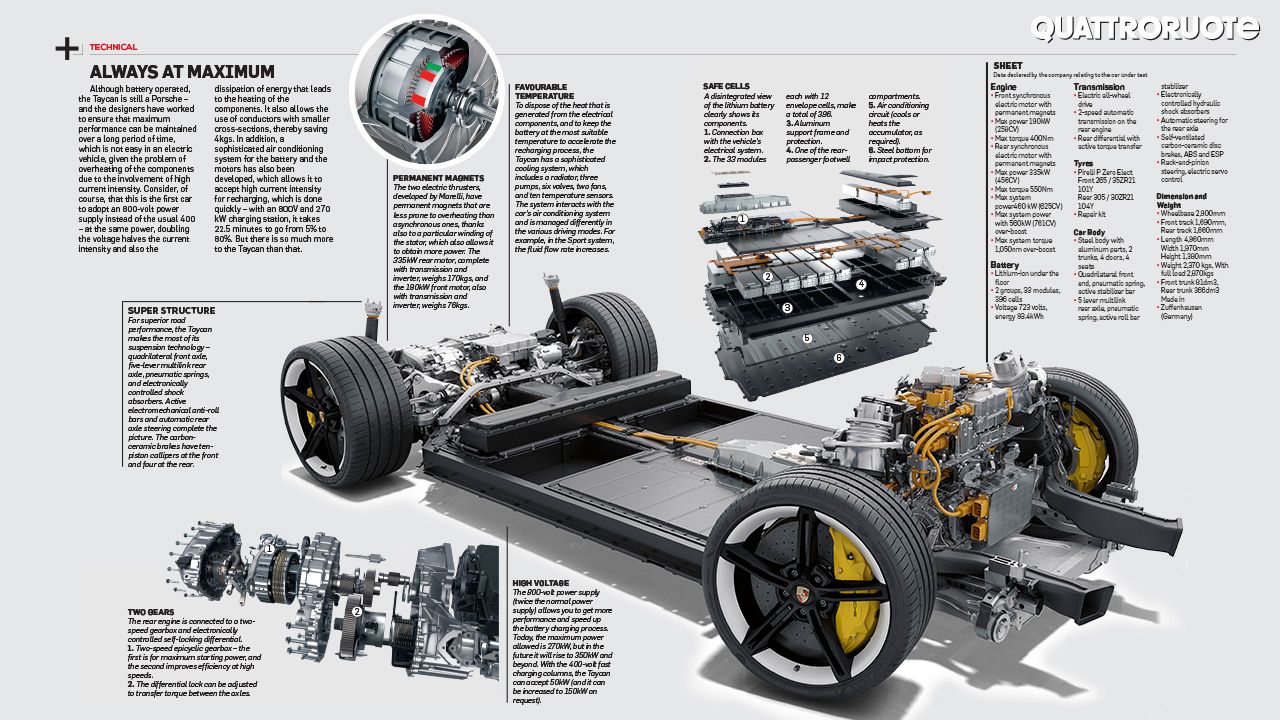
The absence of an engine does, however, magnify the rolling noise of those massive 21-inch wheels, something which is also audible at low speeds. As much as its mission is to rewrite the rules of the EV world – and, to a large extent, it succeeds in doing so (it wasn’t by chance that its pre-production concept was called the ‘Mission E’) – the Taycan is not able to escape certain limitations that are inherent to EVs in terms of range and charging time (something we will address in detail elsewhere in this piece).
Another interesting aspect of the car is its weight, but, in Zuffenhausen, as we shall see, what they have done is nothing less than a miracle – the weight is there, but you simply don’t feel it. The Taycan actually feels like a modern reinterpretation of the 911 GT3 RS. The take-off from stationary is real and, in some sense, violent – a slingshot without any comparison in the ICE world, which would rival more or less any supercar. The g-meter in the dashboard confirms this sensation, which is further ratified by the even more precise instruments at our Test Centre – it takes 2.64 seconds to do a 0 to 100km/h dash. Now, that really means something, for it’s not far from the 2.56 seconds of the 918 Spyder and the 2.55 seconds of the 911 GT2 RS – our current track record holder!
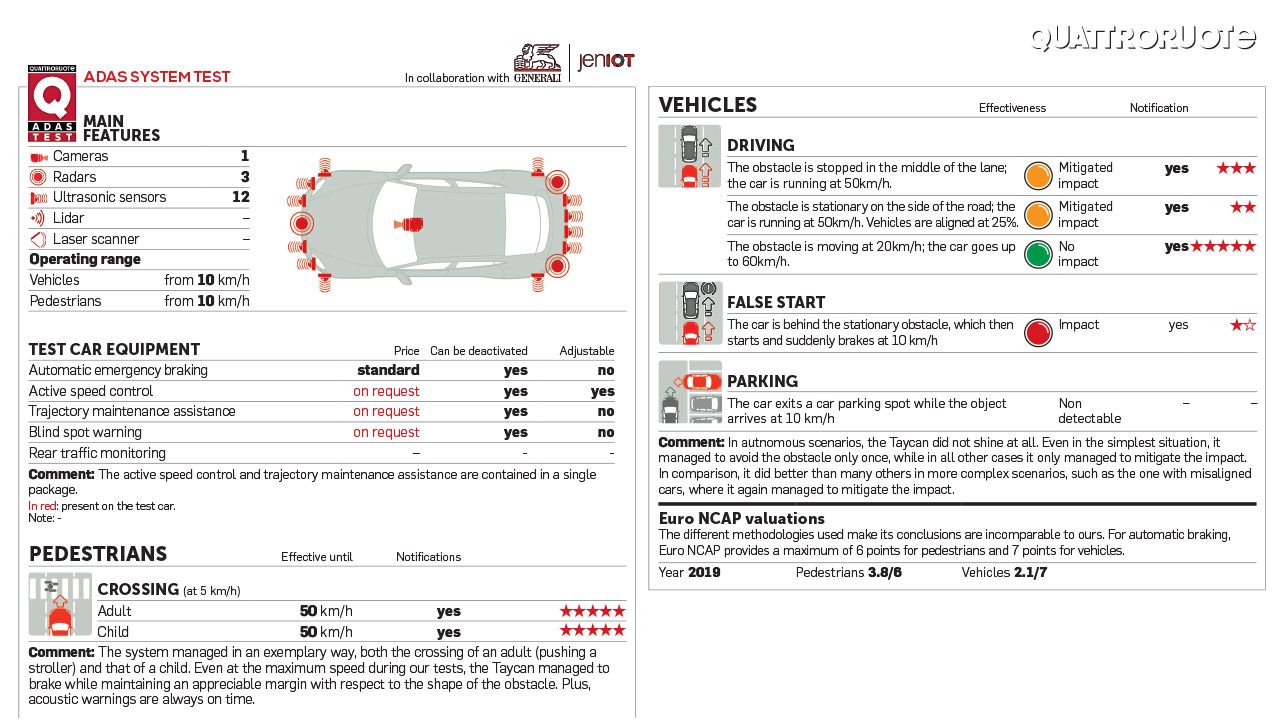
The very careful thermal management of the battery (which, together with the weight, gave several engineers a number of sleepless nights) makes the Taycan capable of this drag race as many times as you want. The fact that it takes lap-after-lap in perfect serenity, while maintaining its remarkable chronometric response, is real proof of its brilliance.
Before & After
Now, it does have slight body roll, but only when you’re approaching warp speeds. As long as you continue to drive fast within what your skills permit, it’s dynamically flawless. This is because of an arsenal of mechatronics, culminating in elements such as four-wheel steering, active anti-roll bars (optional, but essential), and torque vectoring. All of this perfectly blends with the Porsche 4D Chassis control, which avoids any overlap between the various electronic departments and makes you forget its weight – let’s just say that you’d never be able to imagine that the Taycan tips the scales at 2,459kgs.
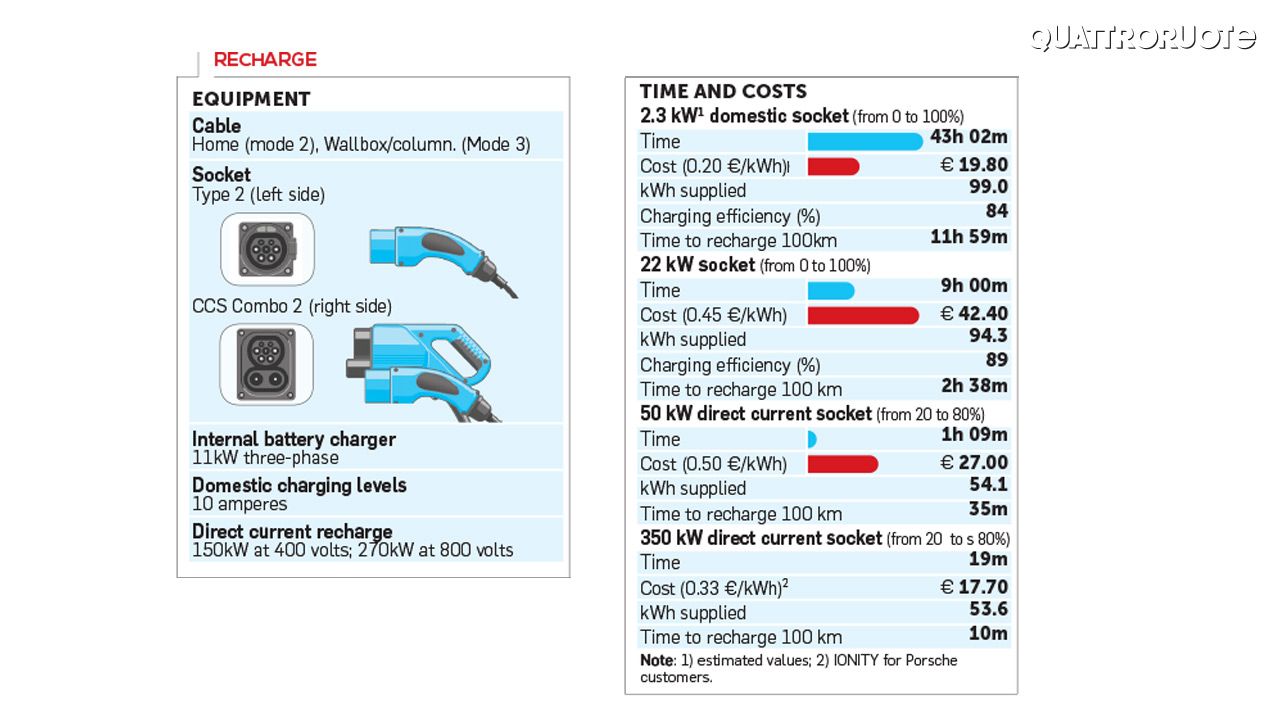
In terms of electronics, the Taycan opens up new possibilities. In fact, it rewrites the rules – a bit like what the Ferrari 458 Italia did for supercars almost a decade ago. Unlike most EVs, the Taycan doesn’t feel like a computer on wheels in terms of the sensation it provides, which is its greatest advantage. At times, it responds like the 911 – although it weighs on the heavier side of things, it’s close to the ground, which helps keep its centre of gravity very low.

After all, with half-a-century of hanging engines over the rear axle, there’s no doubt that Porsche has the ability to deal with technical handicaps. Overall, the Taycan does try to emulate its sibling, however, one must not forget the biggest difference between the two – the Taycan is not a sportscar. It’s a Gran Turismo, just like the Panamera, which is lighter than the Taycan, but the Taycan is super composed, agile, and has scary traction while exiting corners. Even if you open the gas (if we can still call it that) before it’s time, it understeers just the right amount, but its effectiveness is astounding and it never allows you to doubt its otherworldly abilities.

Now, it would not be right to take back all the good words that we said in praise of the Tesla. So, let’s just say that the Taycan is in a different league altogether, and we’ll have to wait and see how Musk responds to this with his three-engine Plaid versions. And then there’s the steering of the Porsche, which always makes you feel in control of the front wheels. It tells you everything about what’s happening in front of the car, and although it lacks the feedback of a mid-engine supercar, even the slightest twitch of the steering offers a very strong sense of control.
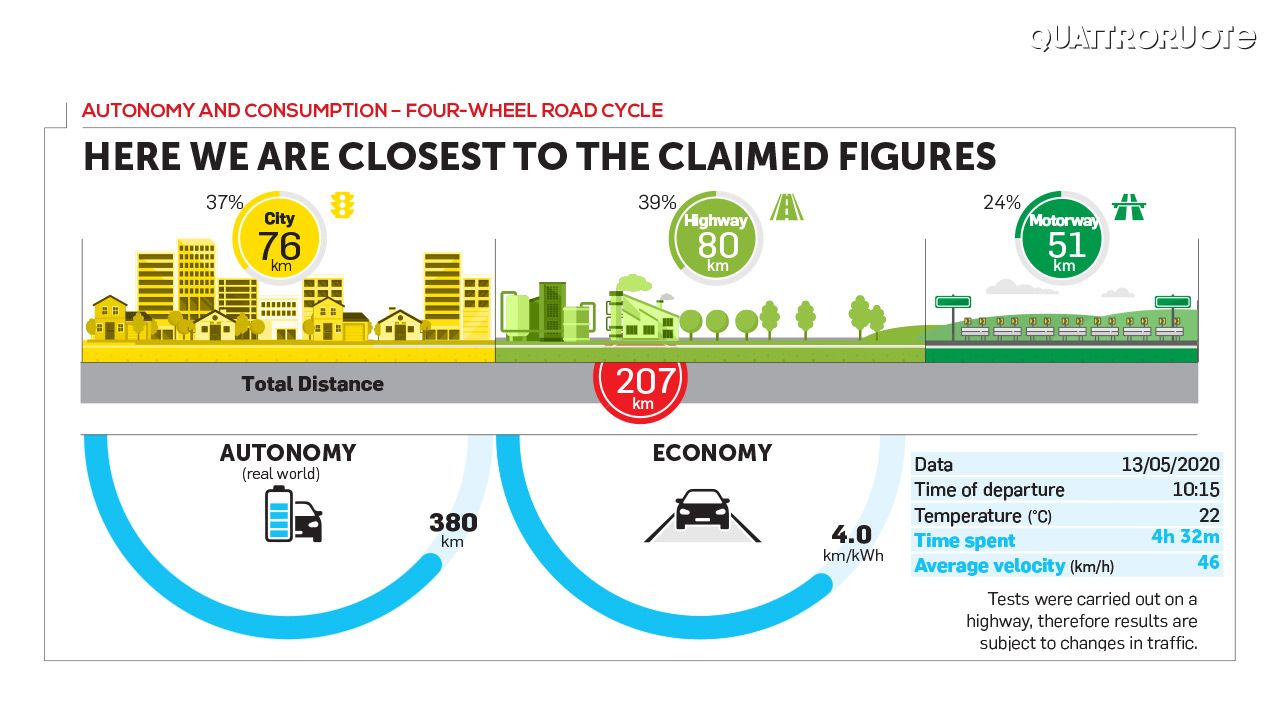
The transition
The carbon-ceramic brakes have a lightning response – an almost imperceptible initial hesitation, followed by extraordinary generosity. In everyday life, the regenerative braking is enough – it goes as far as to give up to 265kW back to the batteries, which, according to Porsche, is enough in 90% of situations. But there is no one-pedal driving like the Tesla – Porsche doesn’t believe in it. The Taycan is managed like a regular car – as long as you don’t touch the pedal, there is only a little regeneration during engine braking. Using a button on the steering wheel, you can increase the effect a little, and if you hold it down for a long time, it allows the front camera to take control, which increases or decreases speed based on what it sees on the road. Once you press the pedal, the transition to real braking is smooth and inadvertent.
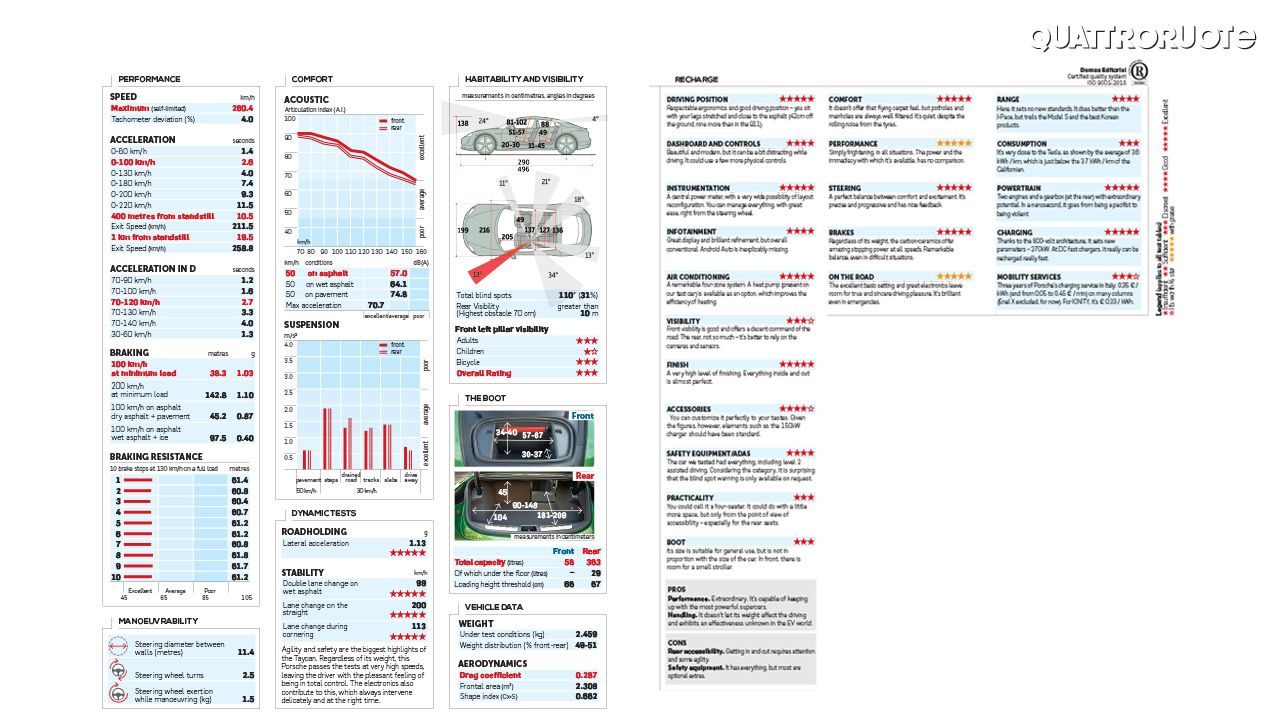
In Sport Plus, the gearbox at the rear can be felt, but it’s not comparable at all with that of a regular petrol-powered car – you feel the gear shift around 90km/h if you accelerate hard, but, in the end, it remains a device to increase efficiency. It improves acceleration, raises top speed, and reduces consumption at a constant speed. Speaking of gearboxes, when you hit the road and get to a curve, paddles and shifting gears are the only thing you feel nostalgic about. But you get used to it sooner than you expect. And that’s the moment when you realise that the Taycan – a beautiful drive without any ifs and buts – is a step towards the future of EVs.

The Turbo S features sports seats, with 18 adjustments as standard. The length of the seat and the width of the backrest can also be adapted – the former is for comfort, while the latter is for fast driving.
© Riproduzione riservata
Also read,
Motors: 2 (1 front + 1 rear)
Power: 751bhp (560kW)
Consumption: Claimed 3.7 km/kWh
Acceleration: 0 - 100km/h - 8.3s
As Tested 3.6 km/kWh
Range: 388kms (claimed); 342kms (as tested)

Write your Comment on